This post was published in the April 2015 issue of Doors & Hardware
[Click here to download the reprint of this article.]
The 2015 International Building Code (IBC) Commentary, available from the International Code Council in April, is planned to include some edits which will help to clarify the requirements for electrified hardware. Although the code language has been refined over the last few editions of both the IBC and NFPA 101 – The Life Safety Code, the code requirements for electrified hardware continue to be confusing for many, often resulting in inconsistent application and enforcement.
There are 7 basic code categories for electrified hardware used to control access or egress, and this edition of Decoded provides a brief refresher on each as well as some recent code changes. Many of these code applications, but not all, fall into the category commonly called “special locking arrangements.” The code references are provided to facilitate further research. Some jurisdictions have modified the national requirements for electrified hardware, so it’s very important to check local codes as well.
~~~

When a door equipped with an access control reader allows free egress using normal operation of the hardware, it is not typically considered one of the special locking arrangements.
Controlled Access / Free Egress: IBC – 1010.1.9 (2015), 1008.1.9 (2012); NFPA 101 – 7.2.1.5 (2015 and 2012)
The majority of electrified hardware applications fall into this category. An access control reader is typically mounted on the ingress side of the opening, to control access. On the egress side, the door hardware allows free egress – just turn the lever or push the touchpad of the panic hardware. The access control reader does not inhibit egress, it controls access only, and the system typically includes an electrified lockset, electrified lever trim, electric strike, or electric latch retraction device. If electric latch retraction devices or electric strikes are installed on fire doors, they must automatically provide positive latching upon fire alarm.
This type of system is not addressed by the codes as a special locking arrangement, because it allows free egress just as a standard mechanical lockset or panic hardware would. These doors are subject to the typical code requirements for operable hardware: doors must be readily openable from the egress side without keys, tools, or special knowledge or effort, and without tight grasping, tight pinching, or twisting of the wrist. One operation must unlatch the door from the egress side, and operable hardware must be mounted between 34 inches and 48 inches above the floor. Applications which do not allow immediate free egress will typically fall into one of the categories outlined below.
~~~
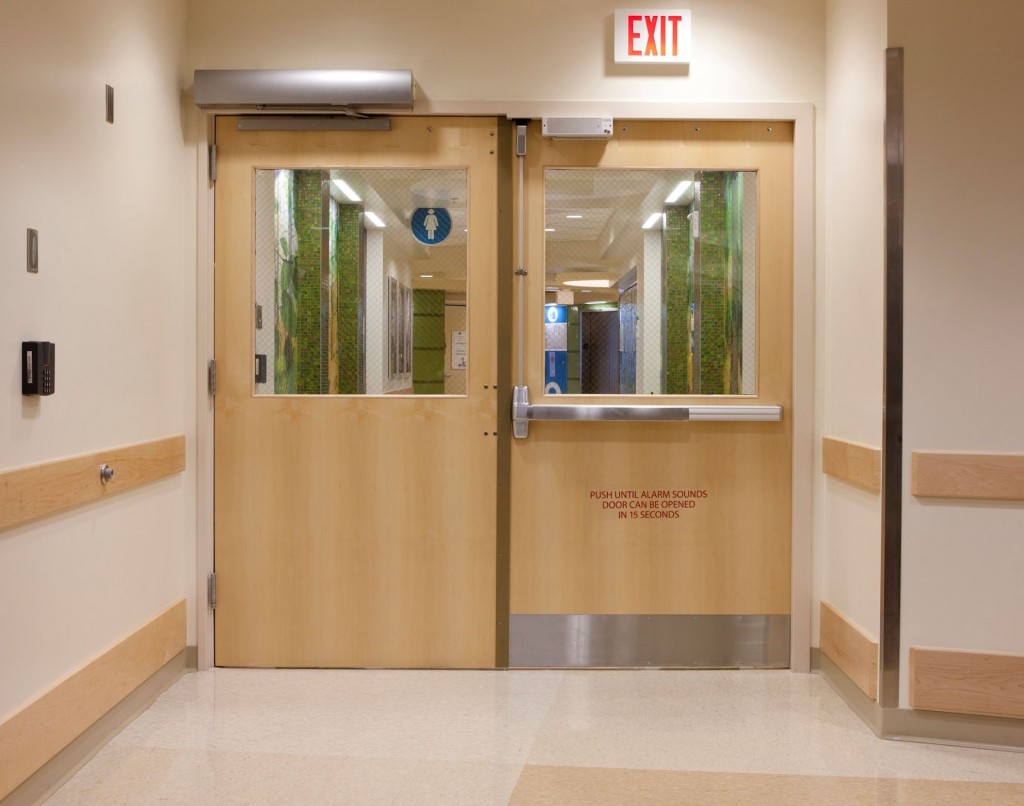
In the 2015 edition of the IBC, the activation time for delayed egress locks has changed from 1 second to 3 seconds, which is consistent with NFPA 101.
Delayed Egress: IBC – 1010.1.9.7 (2015), 1008.1.9.7 (2012); NFPA 101 – 7.2.1.6.1 (2015 and 2012)
Delayed egress locking systems may include panic hardware or an electromagnetic lock with delayed egress circuitry, or a delayed egress controller used in combination with other listed components. This hardware delays egress for 15 seconds (or 30 seconds when approved by the Authority Having Jurisdiction (AHJ)). The use of these locks is dependent upon the use group or occupancy classification, and the requirements vary between the IBC and NFPA 101. The IBC does not allow delayed egress locks on Assembly, Educational, or High Hazard occupancies; NFPA 101 includes limitations specific to each occupancy classification.
There are many conditions for the use of delayed egress locks, including a sprinkler / fire alarm system which releases the lock to allow immediate egress upon activation, a local audible alarm, signage, remote release, emergency lighting, release on power failure, and limitations on the number of delays in an egress route. Activation requirements to begin the 15-second timer include a maximum force of 15 pounds applied for no more than 3 seconds. Prior to the 2015 edition of the IBC, activation was required after a 1-second application of force, but this has been changed to 3 seconds which is consistent with the NFPA 101 requirements. The 2015 edition of the IBC also added a requirement for delayed egress locks to be listed in accordance with UL 294 – Access Control System Units. The 2015 requirements apply to jurisdictions where this edition has been adopted.
~~~
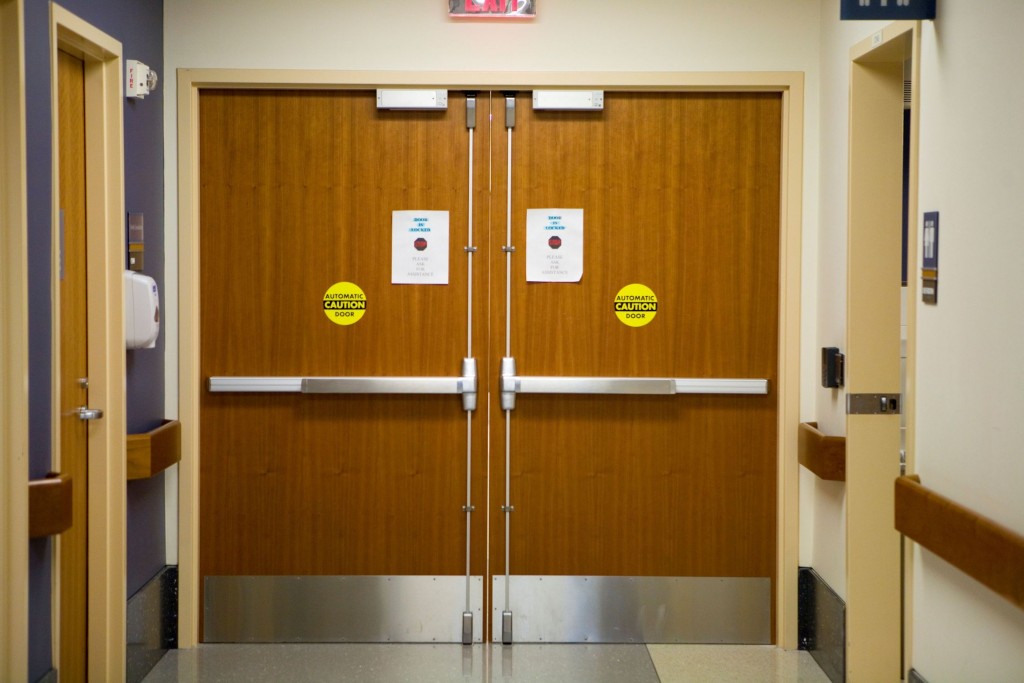
Controlled egress locks are allowed in some health care units, but staff must be prepared to facilitate egress if needed.
Controlled Egress: IBC – 1010.1.9.6 (2015), 1008.1.9.6 (2012); NFPA 101 – 18.2.2.2.5-6, 19.2.2.2.5-6 (2015 and 2012)
This application is specific to health care occupancies equipped throughout with an automatic sprinkler system or automatic smoke or heat detection system, and allows certain types of units to have locked doors in a means of egress when this control is needed for the safety or security of the patients. The codes are not specific about the types of units where this locking is allowed – this is left up to the AHJ. A common location would be a memory care unit housing patients with dementia, although areas such as pediatrics, maternity, and emergency rooms may be considered.
The most common locks used in a controlled egress system are electromagnetic locks, or delayed egress devices which have been modified to have an “infinite delay” instead of the typical 15-second delay. Both of these products would be fail safe, allowing free egress when power is removed. When this section was introduced in the 2009 IBC, the locks were incorrectly called “delayed egress locks” even though this section of the code does not require a time delay. This terminology was changed to “special egress” in the 2012 edition, and is now called “controlled egress” in the 2015 edition.
All clinical staff is required to carry the keys, codes, or other credentials required to operate these locks, and the unlocking procedures must be part of the facility’s emergency plan. For most types of units, the locks must automatically unlock to allow immediate egress upon actuation of the fire alarm or sprinkler system and upon power failure. A remote switch located at the fire command center, nurses’ station, or other approved location must directly break power to the lock to unlock the door. Some areas, such as behavioral health units or a location where an infant abduction system is used may be exempt from the automatic unlocking requirements. The IBC states that a building occupant must not be required to pass through more than one door with a controlled egress lock before entering an exit, and emergency lighting is required at the door. The 2015 IBC has added a requirement for the locking system to be listed in accordance with UL 294. The NFPA 101 requirements vary slightly so refer to the referenced section for specifics.
~~~
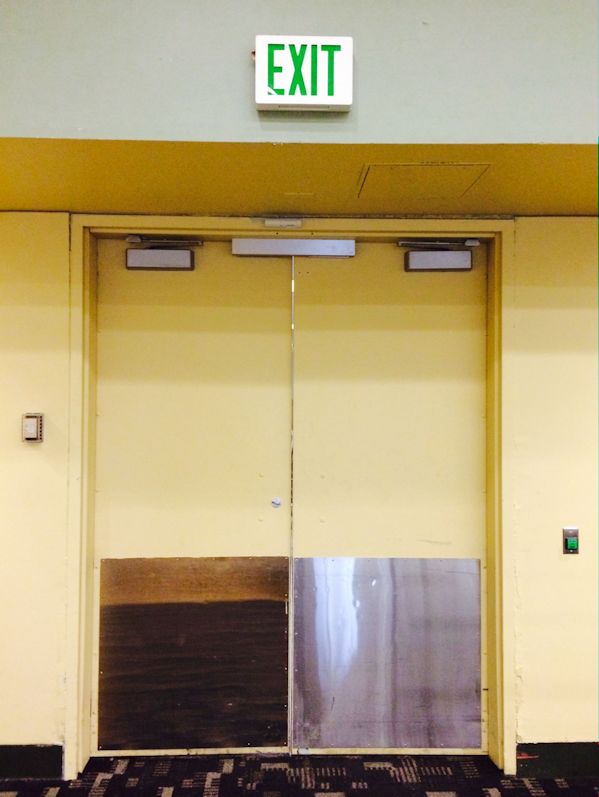
The section called Access Controlled Egress Doors has been changed to Sensor Release of Electrically Locked Egress Doors in the 2015 IBC.
Electromagnetic Lock with Sensor Release: IBC – 1010.1.9.8 (2015), 1008.1.9.8 (2012); NFPA 101 – 7.2.1.6.2 (2015 and 2012)
In most recent editions of the IBC and NFPA 101, the section that applies to mag-locks released by a sensor is called Access Controlled Egress Doors. Because of this title, this section was sometimes misapplied to all doors with access control readers, even though those doors typically allow free egress without sensors or other release devices. In the 2015 IBC, the title of the section was changed to Sensor Release of Electrically Locked Egress Doors, to avoid this confusion. Mag-locks that are unlocked by door-mounted hardware are addressed by a different set of code requirements.
When a mag-lock released by a sensor is used, the use group or occupancy type must be one where this application is allowed. In addition to the motion sensor which detects an approaching occupant, the lock must be unlocked by actuation of the fire alarm / sprinkler system (if present), loss of power, and a signal from a push button. The push button must unlock the lock for 30 seconds independent of the access control system, and must be located 40 inches to 48 inches vertically above the floor and within 5 feet of the door. Ready access must be provided to the push button, and it must be marked “Push to Exit.”
~~~
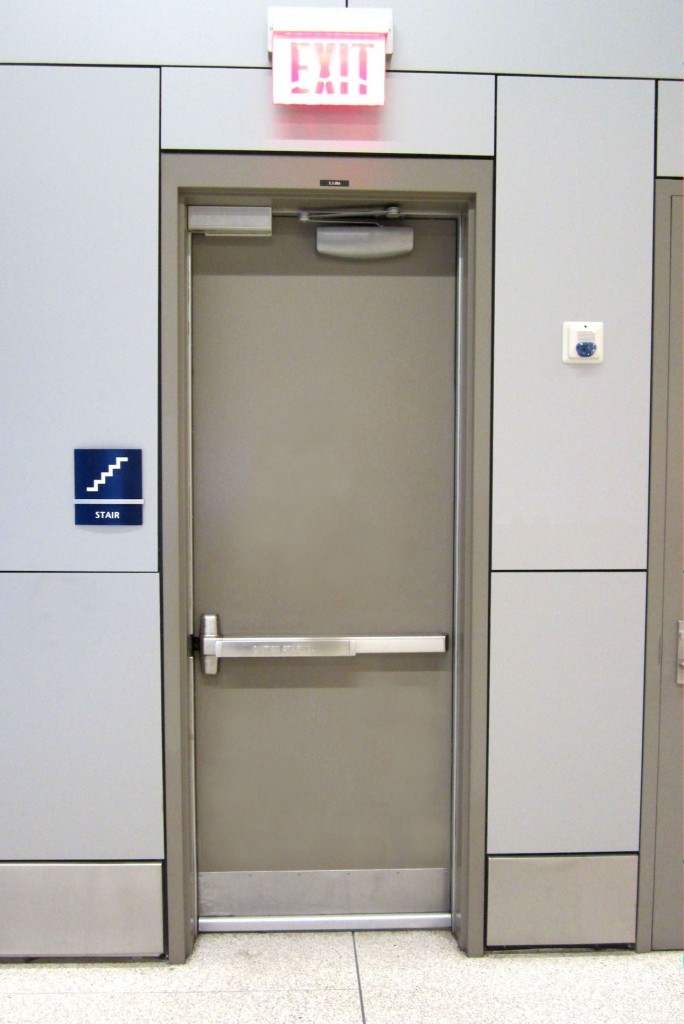
Mag-locks released by hardware mounted on the door are addressed in a separate code section from mag-locks released by a sensor.
Electromagnetic Lock with Door Hardware Release: IBC – 1010.1.9.9 (2015), 1008.1.9.9 (2012); NFPA 101 – 7.2.1.5.6 (2015 and 2012)
A new section was added to the IBC and NFPA 101 in the 2009 editions, which addresses doors with mag-locks that are released by hardware mounted on the door. The door-mounted hardware may include a lever handle, panic hardware, or other device equipped with a request-to-exit (REX or RX) switch or electronic touch sensor. The added section clarifies the code requirements for mag-locks released this way, vs. mag-locks released by a sensor (see above).
When a mag-lock released by door-mounted hardware is used, the use group or occupancy type must be one where this application is allowed. The door must be equipped with listed hardware mounted on the door leaf, which incorporates a built-in switch to directly release the electromagnetic lock and unlock the door immediately. The release device must have an obvious method of operation, and must be readily operated with one hand under all lighting conditions. The code requirements that address this application do not require the lock to unlock upon actuation of the fire alarm or sprinkler system, but the lock must unlock upon loss of power to the switch in the door-mounted hardware.
~~~
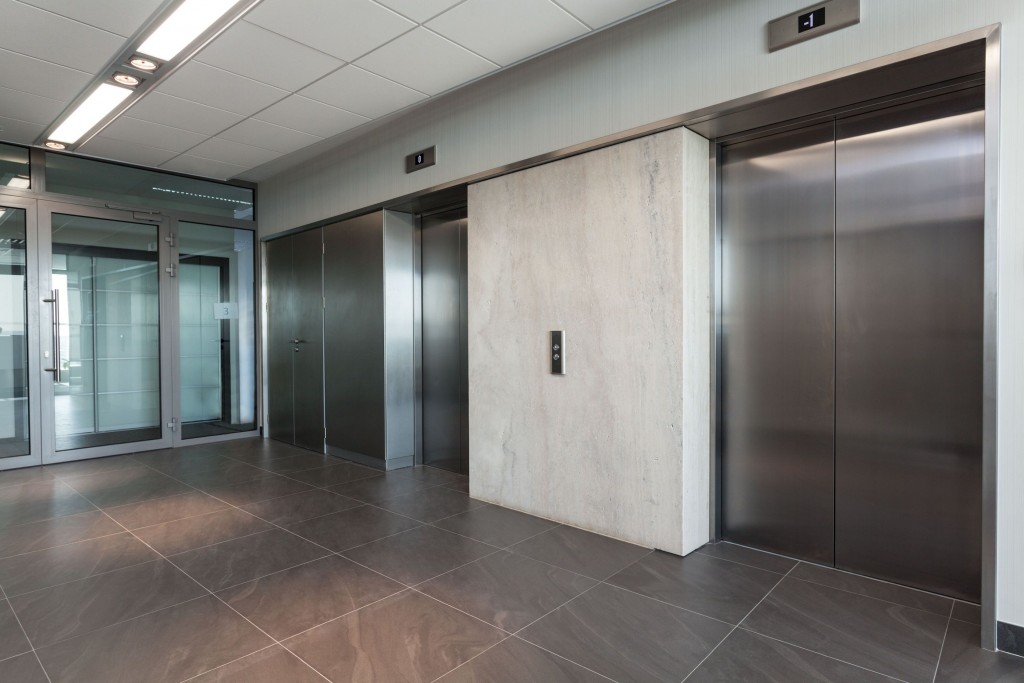
Electrified locking of elevator lobby doors is only addressed by NFPA 101, not the IBC, although some jurisdictions have adopted code modifications that allow it.
Elevator Lobby Egress: IBC – 3006.4 (2015), 713.14.1 (2012); NFPA 101 – 7.2.1.6.3 (2015 and 2012)
The IBC does not currently include a section specific to locks on elevator lobby doors; elevator lobbies are required to have a code-compliant means of egress, so methods used to secure the doors would be limited by the IBC to an alarm to deter access, or possibly a delayed egress lock. For facilities where NFPA 101 (2009 edition or later) is enforced, a fail safe lock may be used if other criteria are met. This lock will allow access through the secured doors during a fire alarm, so building occupants can find another exit. Some jurisdictions have adopted modifications to the IBC which address locks on elevator lobby doors.
NFPA 101 permits electrified locking of elevator lobby doors only where the building has an automatic sprinkler system or a fire alarm system and where this type of locking is allowed by the occupancy chapters. The lock must unlock automatically upon actuation of the sprinkler system or fire alarm system (except when the system is initiated by a manual fire alarm box) and upon loss of power to the lock. When the lock is unlocked, the doors must remain unlocked until the fire alarm system has been manually reset. If the locking hardware has a latch, there must be code-compliant hardware on the door leaf to release the latch. Locking systems used on elevator lobby doors must be listed in accordance with UL 294, and a two-way communication system must be installed in the elevator lobby to allow a building occupant to call for help.
~~~
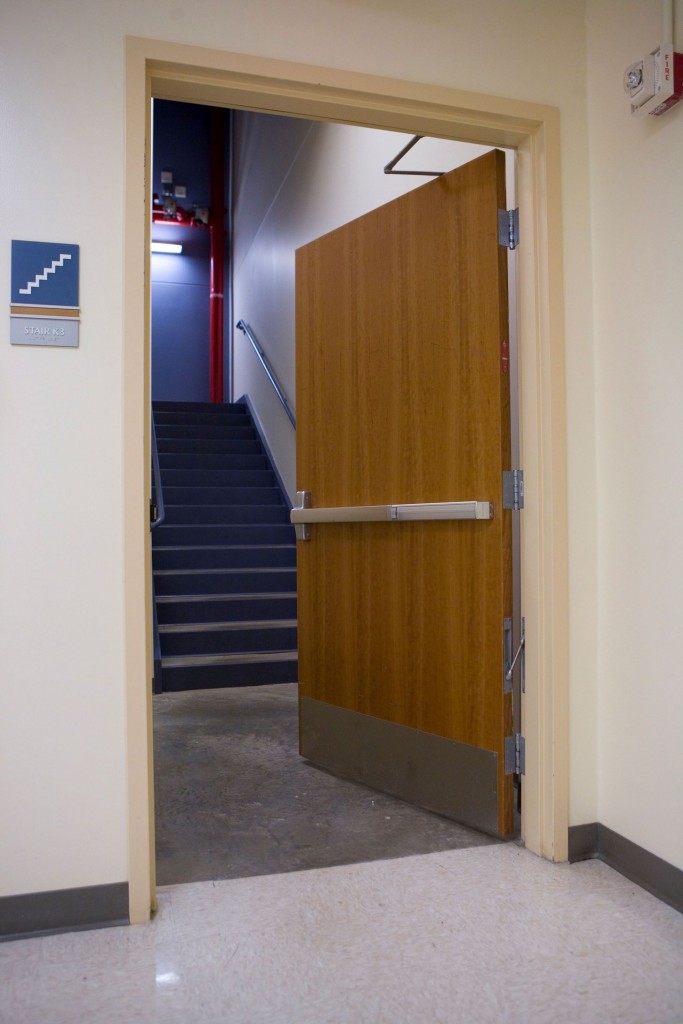
The stairwell reentry requirements vary between the IBC and NFPA 101; the IBC requires all stair doors to allow reentry with the exception of the discharge door.
Stairwell Reentry: IBC – 1010.1.9.11 and 403.5.3 (2015), 1008.1.9.11 and 403.5.3 (2012); NFPA 101 – 7.2.1.5.8 (2015 and 2012)
If stair doors are locked on the stair side, they must allow reentry back into the building to ensure the safety of building occupants during a fire. If a stairwell becomes compromised by smoke, occupants are able to leave the stair through remotely-unlocked doors and find another exit. These unlocked stair doors also allow firefighters access to each floor.
A fail safe lockset or fail safe lever trim for fire exit hardware is typically used to meet the stairwell reentry requirements; a less common option is a frame-mounted device that controls the locking/unlocking of a modified mechanical mortise lock. Electric strikes may not be used for stairwell reentry, because electric strikes on fire doors must be fail secure; fail safe electric strikes are not allowed on fire door assemblies. Electromagnetic locks are occasionally used for stairwell reentry, particularly for retrofit applications. Latching hardware is required in addition to the electromagnetic lock, to provide the positive latching required for fire doors.
The requirements for stairwell reentry differ from the IBC to NFPA 101. With the exception of the 2003 edition, the IBC requires all stair doors to facilitate re-entry with the capability of remote unlocking from the fire command center. In addition, the IBC requires high-rise buildings to have a stairway communication system.
NFPA 101 allows stairs serving 4 stories or less to have mechanical locks on the stair side, which do not allow reentry. In most facilities, stairs serving more than 4 stories must allow reentry when the fire alarm system is actuated. NFPA 101 also includes an option called “selected reentry” which allows some doors to be mechanically locked, while others allow re-entry.
~~~
Conclusion
When considering which code requirements to follow, first identify which category the hardware falls into, and refer to the applicable code section. This summary is not intended to provide complete information about each of the types of electrified locks referenced. For more information, refer to the referenced code sections. Keep in mind that state or local requirements could differ from those of the IBC or NFPA 101, so it’s important to be aware of the codes in your facility’s jurisdiction. Refer to the published codes for the detailed code requirements, and consult the Authority Having Jurisdiction for more information about the local requirements.
You need to login or register to bookmark/favorite this content.

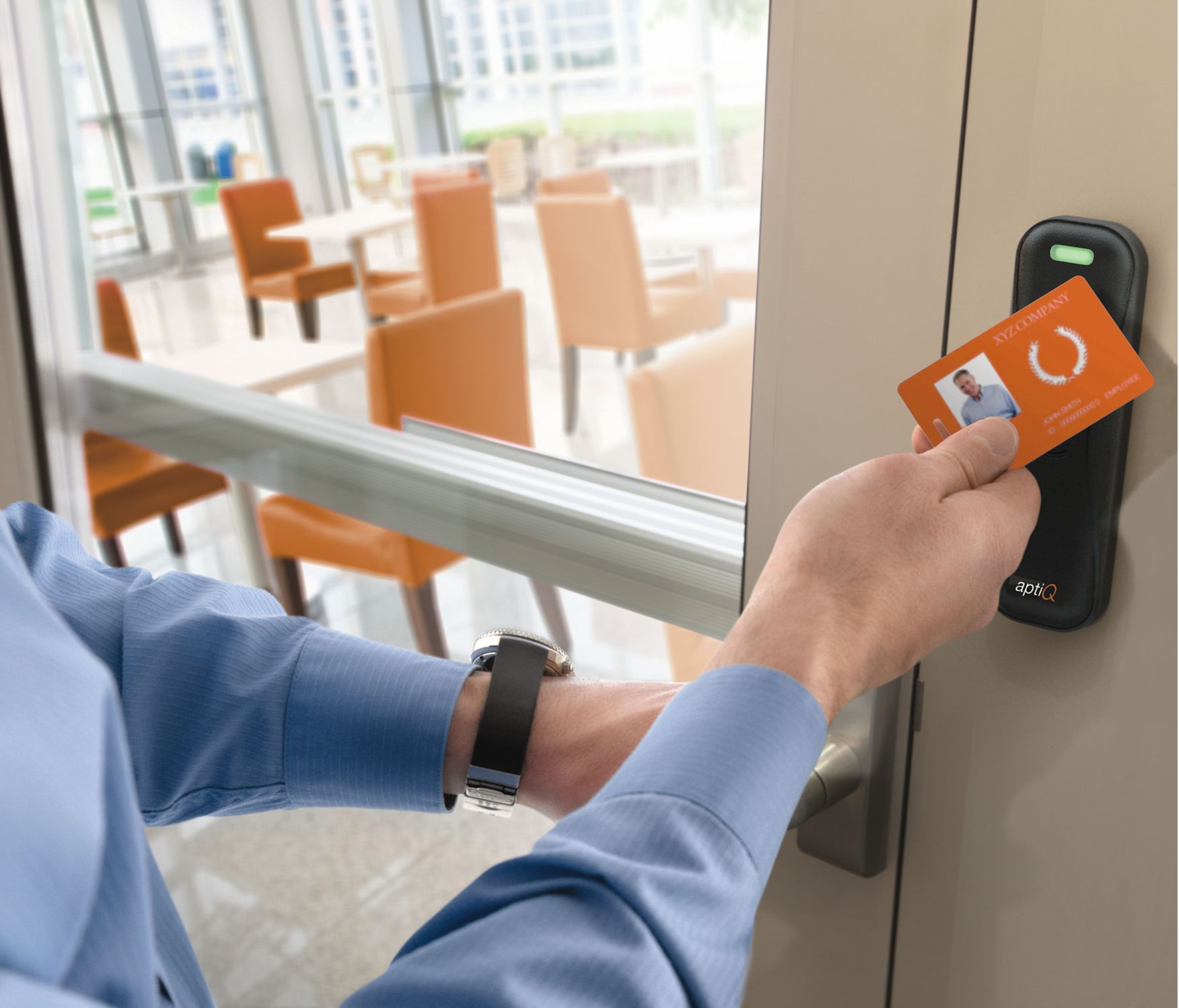





Great article! Good to see this all on one page — just one more reason to send clients your URL. Thanks again for all your behind-the-scenes hard work.
Are the exit discharge doors subject to stairwell reentry? Once you are out of the building, does it matter?
Hi David –
The model codes do not require the stair discharge doors to allow reentry back into the stairs. There could be a local code requirement but I’ve never seen one.
– Lori
Hi Lori,
I had your blog article quoted to me on a project where I had specified fail safe exit trim on all stairwell doors. Is the intent of IBC 403.5.3.1 requiring a stairway communication system to provide means for unlocking doors in a non-alarm condition? If the building is in alarm, all doors will be unlocked. Thank you,
Hi Nathan –
The stairway communication system is required in high-rise buildings where the stair doors are locked on the stair side with electrified locks that allow remote release. There is nothing that I’ve ever seen in the code about needing to be able to unlock the stair doors via the communication system. The IBC doesn’t require the doors to be unlocked automatically upon fire alarm like NFPA 101 does…the IBC requires the doors to be unlocked by a switch at the fire command center. With the communication system you could call for help and have someone come and let you out of the stairwell, or have the firefighters use the switch. Theoretically they would flip the switch as soon as they arrive, but I’m not sure they’re all familiar with this application.
– Lori